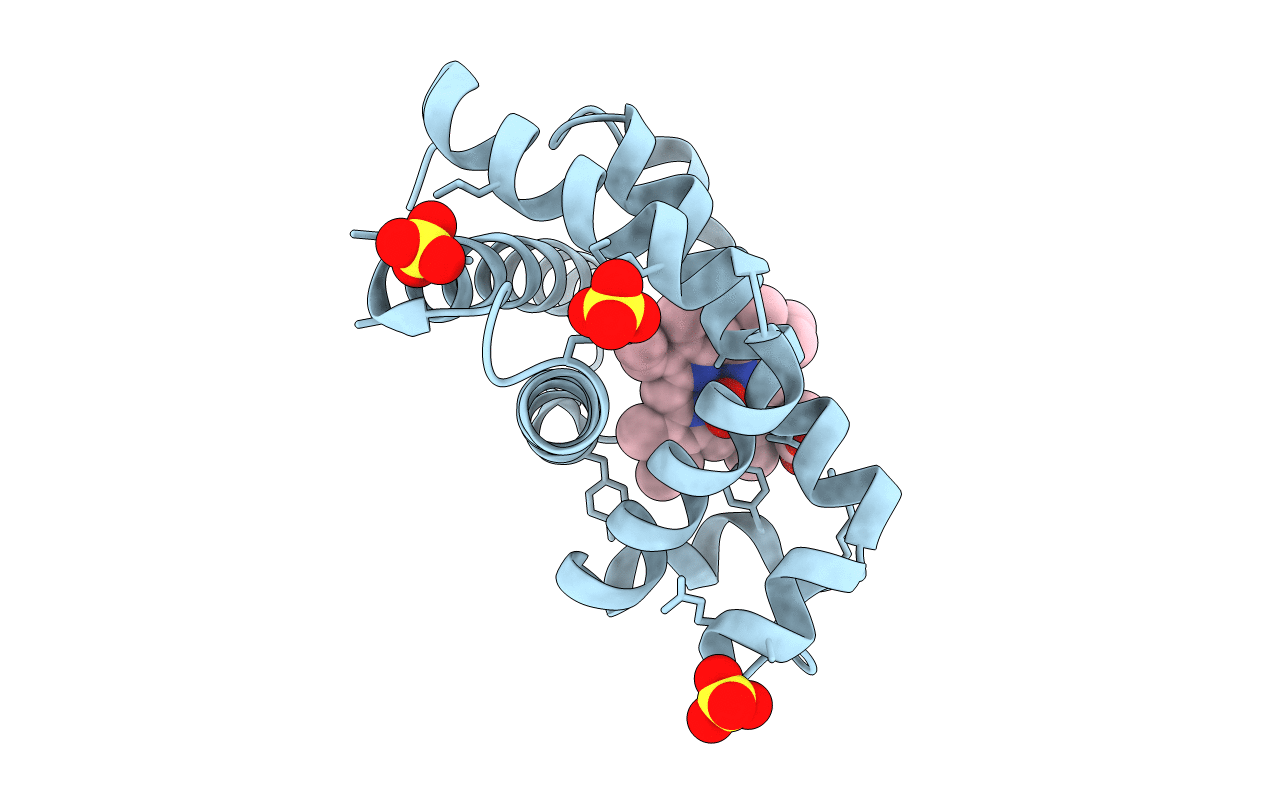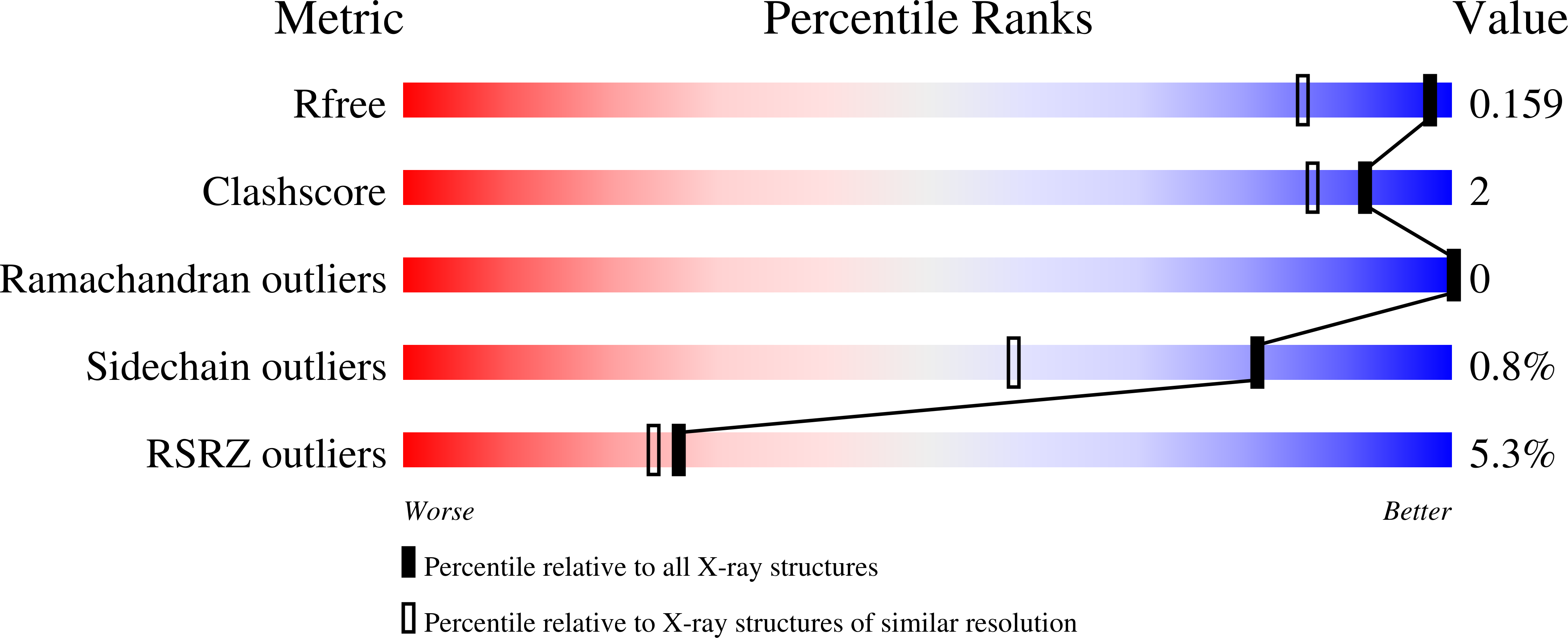
Deposition Date
2021-11-02
Release Date
2022-06-01
Last Version Date
2024-10-16
Entry Detail
PDB ID:
7SPH
Keywords:
Title:
Crystal structure of sperm whale myoglobin variant sMb13(pCaaF) in space group P21
Biological Source:
Source Organism:
Physeter macrocephalus (Taxon ID: 9755)
Host Organism:
Method Details:
Experimental Method:
Resolution:
1.30 Å
R-Value Free:
0.16
R-Value Work:
0.13
R-Value Observed:
0.13
Space Group:
P 1 21 1


